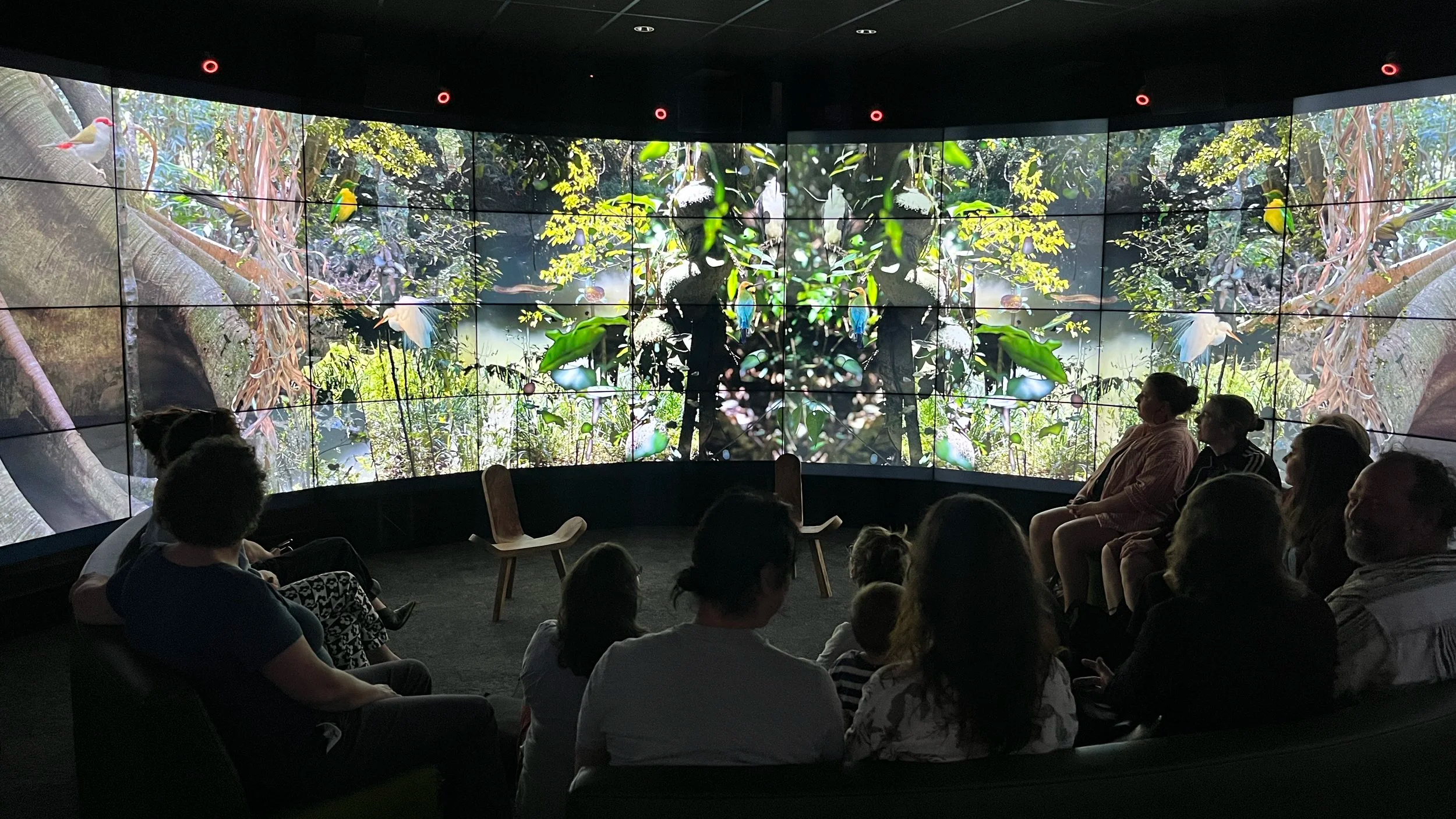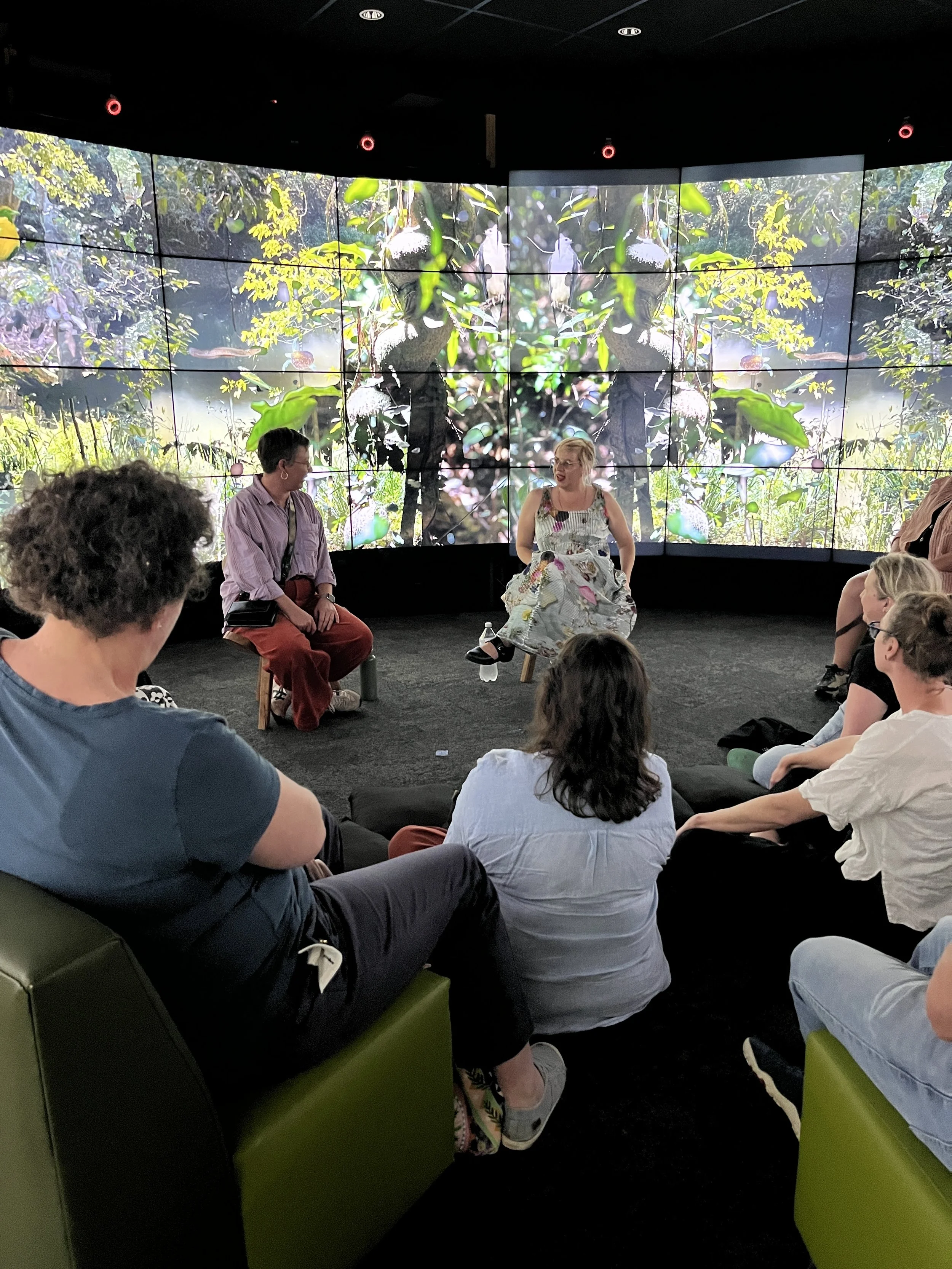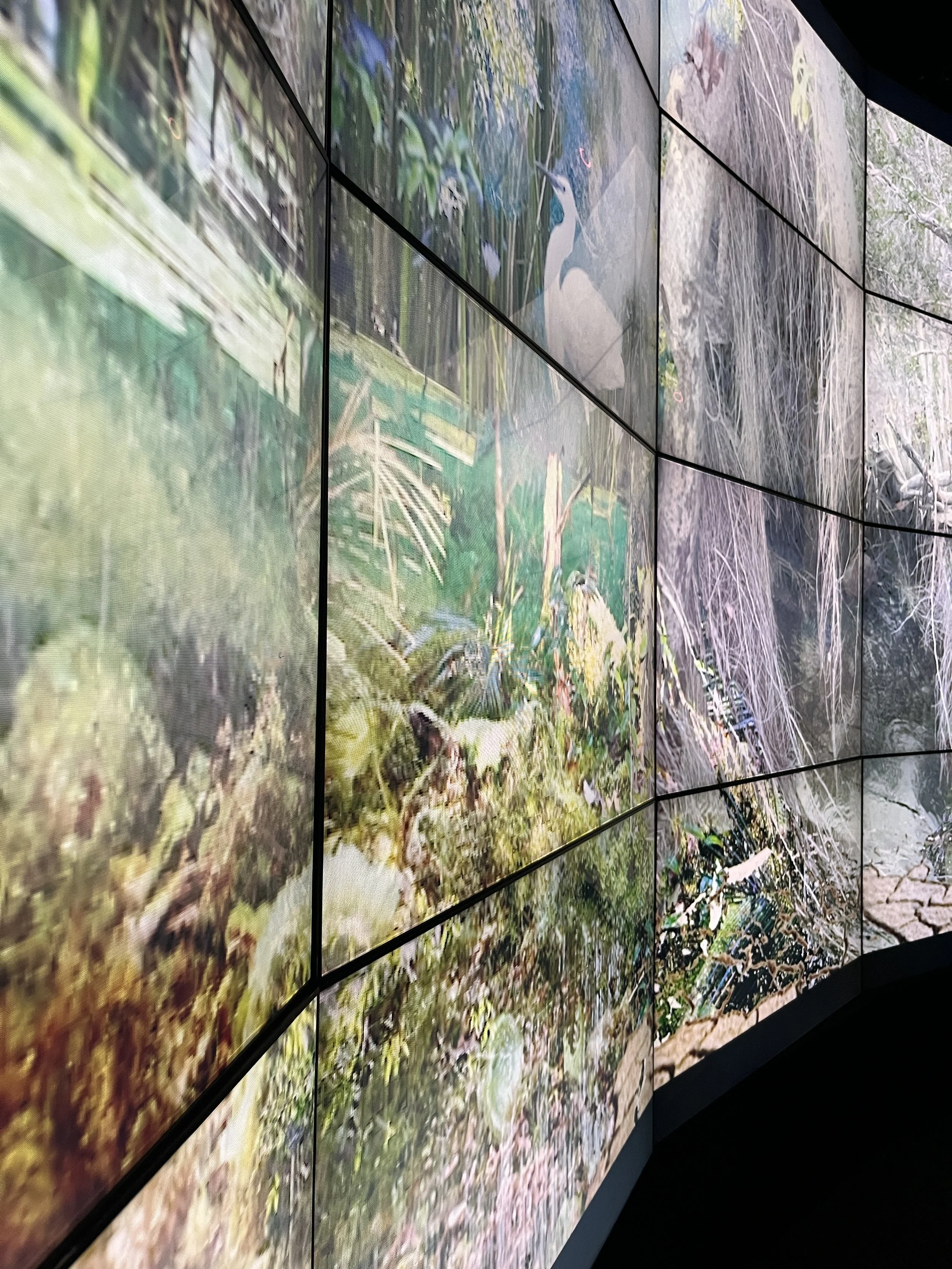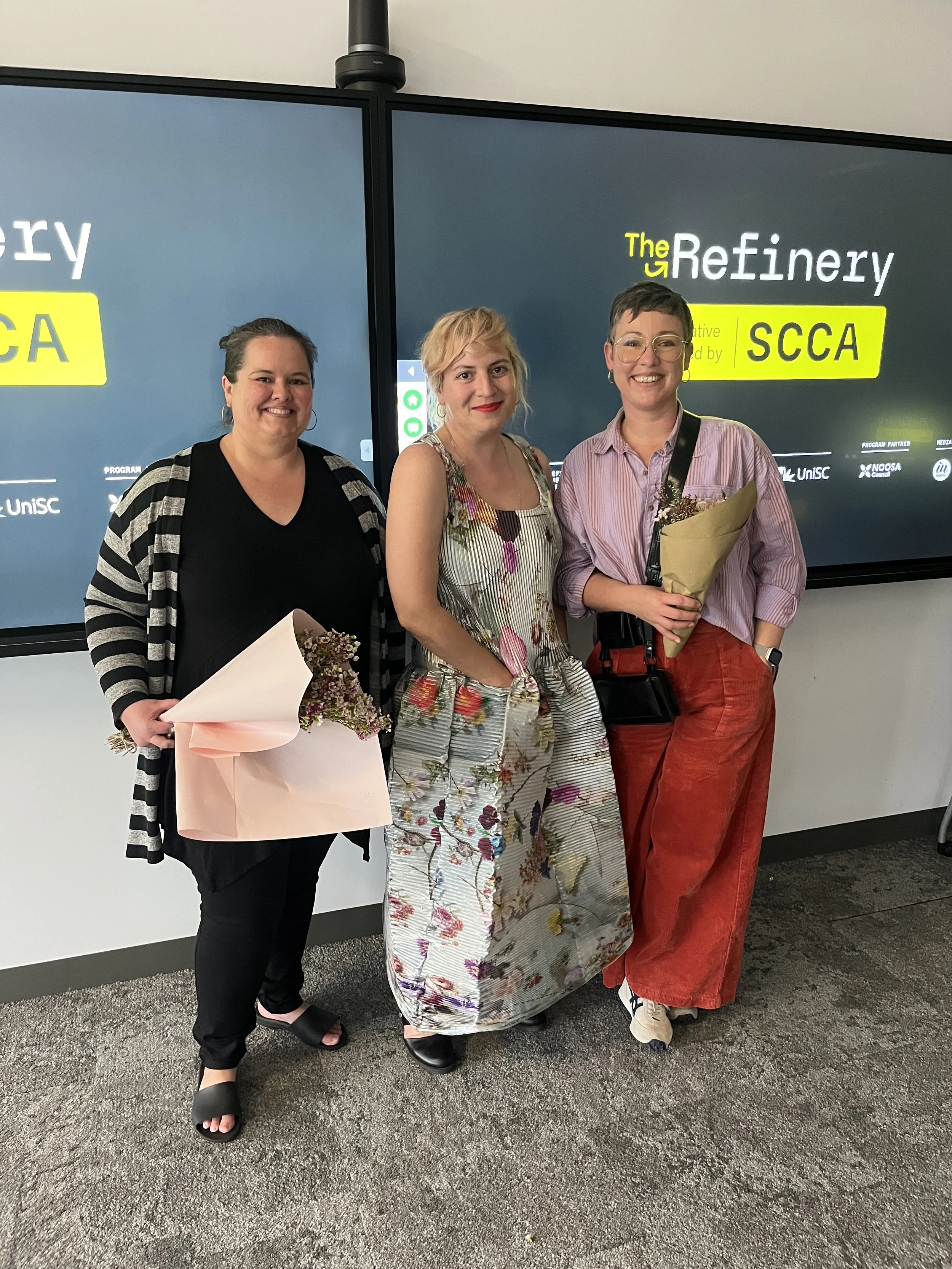A Surreal Storybook Comes to Life
And then plants are confused with stones. Rocks look like brains, stalactites like breasts, veins of iron like tapestries adorned with figures.
As per its title from an essay by French thinker Roger Caillois, the new assemblage work-in-progress by Marian Tubbs defies neat categorisation. Created as part of her five-month Natural Ecologies residency, the new work is a lure - a point of entry inviting curiosity and encouraging viewers to seek out both the essay and the landscapes of the work itself.
Displayed in the 320-degree visualisation system of the CAVE2 at UniSC, layered images, invented creatures and remote landscapes create a surrealist story book inspired by the wonder and awe of childhood and the natural world.
In the artist talk with Curator and Gallery Manager, Megan Williams, Tubbs’ admitted the new work is an aesthetic departure from her usual creative output, influenced by the residency opportunity and field trips to the Noosa Everglades and K’gari. Shot on a Hasselblad whilst paddling a canoe in the Everglades to get as close to the surface as possible, and capturing K’gari’s remarkable flora and fauna, layered images create a storybook juxtaposition of landscapes in the Noosa and Great Sandy Biosphere regions.
Marian shared her long connection to the area with the audience and how the Natural Ecologies residency allowed her to view those familiar landscapes in new ways. Weaving imagery of remnant pockets of Booyong rainforests found near her current home in Lismore, her personal connections are further woven into the moving compositions, with images folding back on themselves, creating a scene that is both imagined and real.
This work celebrates the biodiversity of these unique and adjacent Biosphere environments. Her residency allowed her time and space to research the rich birdlife in the regions. She declares, it is a new ‘obsession’. Some of the birds in her work are photographic captures, some digitally scraped from the internet and some are deliberately AI constructed, as Tubbs’ experiments with the current ‘clunkiness’ of this new medium.
The resulting visuals are playful and not deliberately polished. It is an attempt to capture the wide-eyed curiosity and affective state of a toddler before language: a readiness to be astonished. Marian explained time spent reading books to her three-year-old niece alerted her to this wondrous state and this filtered into the creation of the work.
Drawn to the idea that technology dates itself, Marian spoke to her use of emergent technology as an archive of the digital world’s progress. Her AI hybrid creatures are not meant to pass as documentary; they’re characters in a speculative ecosystem, creatures with odd habits and movement, that toy with our expectations of natural history.
She explains her assemblage practice is used to democratise, both art and technology; in this way they can be used at various skill levels. This work as process and output is deliberately approachable, inviting participation rather than intimidation.
“The surreal offers us a space to rehearse better worlds, to invent species that ask us to consider ethical and speculative futures. This is a practice of un-learning.”
Future plans for the development of the work are ambitious and include a 16-channel soundscape and AR filters for use on smart phones. Marian explains placing art on an everyday device, allows people to experience elements of the project and become ‘a tourist’ inside the imagined ecosystem.
The work will also be shown as a night projection at Lismore Regional Gallery Quad, with future activations planned to broaden access.
Aside from the creative output, Marian opened up about her learnings from the residency, in particular her experience with the Creative Ecologies Research Cluster team and the group of fellow artists on the K’gari Field Trip. Whilst she tends to work solo, collaboration was a thread through the residency and she found the enthusiasm of other artists within those experiences infectious. She was particularly grateful for the access to technology that supported the work’s development and for the practice-led research process: testing, failing, learning and the ultimate vulnerability of presenting a work-in-progress to further hone the work.
Marian’s work reminds us that art can be anything we want it to be. By layering real and imagined ecologies, she offers viewers a portal into landscapes that feel at once familiar and strange, encouraging us to return to the childlike state of wonder that precedes certainty. This moving assemblage is more than a work-in-progress: it is a glimpse into how we might encounter the world differently, with curiosity, care and imagination.
Photos by Toni Wills.
R|Artist Residency: Noosa Natural Ecologies is presented by SCCA through The Refinery in partnership with the Creative Ecologies Research Cluster at UniSC. Supported by Major Partners, Queensland Government through Arts Queensland, Sunshine Coast Council, and
Noosa Council through the Regional Arts Development Fund. Delivered with support from Noosa Biosphere Reserve Foundation and
Noosa Parks Association.
Sign up for updates and be the first to know about our upcoming programs.





